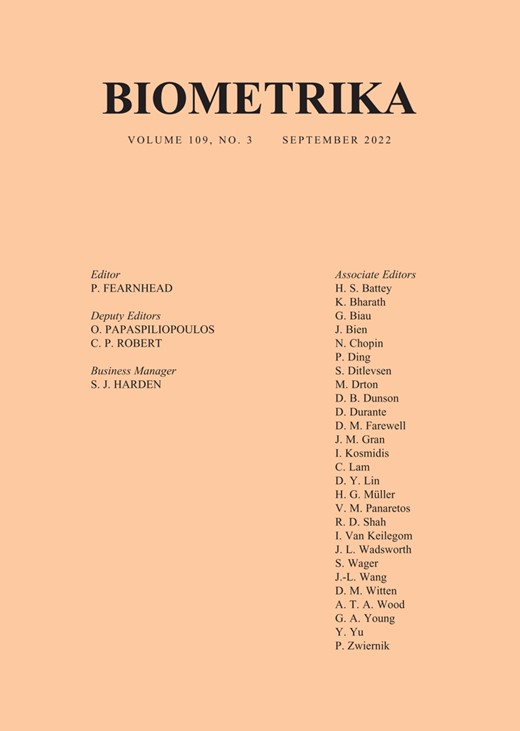-
Views
-
Cite
Cite
Xuefei Zhang, Gongjun Xu, Ji Zhu, Joint latent space models for network data with high-dimensional node variables, Biometrika, Volume 109, Issue 3, September 2022, Pages 707–720, https://doi.org/10.1093/biomet/asab063
Close - Share Icon Share
Summary
Network latent space models assume that each node is associated with an unobserved latent position in a Euclidean , and such latent variables determine the probability of two nodes connecting with each other. In many applications, nodes in the network are often observed along with high-dimensional node variables, and these node variables provide important information for understanding the network structure. However, classical network latent space models have several limitations in incorporating node variables. In this paper, we propose a joint latent space model where we assume that the latent variables not only explain the network structure, but are also informative for the multivariate node variables. We develop a projected gradient descent algorithm that estimates the latent positions using a criterion incorporating both network structure and node variables. We establish theoretical properties of the estimators and provide insights into how incorporating high-dimensional node variables could improve the estimation accuracy of the latent positions. We demonstrate the improvement in latent variable estimation and the improvements in associated downstream tasks, such as missing value imputation for node variables, by simulation studies and an application to a Facebook data example.



